I start this Color Me Beautiful series with the color yellow.
Yellow is the most visible color and is the first color the human eye notices! Yellow’s stimulating nature and high visibility to the eye is the reason why many road signs are bold yellow (contrasted by black text). This is another reason why restaurants use the color yellow in their signs. It is known to stimulate appetite and triggers the feelings of happiness and friendliness, warm like the sun. Maybe this is why we feel so good when the sun is out.
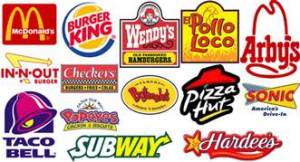 Likewise, I hope this Color Me Beautiful series stimulates you to introduce and increase your plate with more of the colors of the rainbow.
Likewise, I hope this Color Me Beautiful series stimulates you to introduce and increase your plate with more of the colors of the rainbow.
Imagine with me why certain fast food places use yellow and red colors; Take Kentucky Fried Chicken (KFC), McDonald’s, Burger King and the other fast food establishments in the image on the left for instance. These colors are just one marketing ploy that are eye-catching and get your attention to roll in to their establishment for that quick fast food. Why not stick with real fast yellow food? Here are some really good reasons why?
Yellows come from The Latin word Lutein lutes means “yellow”.
This plant chemical is geared to protect the eyes by modulating light energy. The yellow color of the human macula lutea (literally, yellow spot) in the retina
The yellow color of the human macula lutea (literally, yellow spot) in the retina
(from Latin rēte, meaning “net”) of the eye is the third and inner coat of the eye which is a light-sensitive layer of tissue. results from the lutein and zeaxanthin it contains.
Lutein nicknamed “the eye vitamin,” is a carotenoid antioxidant phytonutrient (plant nutrient), which ranges from yellow to red pigments. It is an essential nutrient for normal vision.
Eye protection – The central part of the retina, called the macula, contains macular pigments in which lutein is concentrated. The yellow coloured pigments protect the retina from damage of the photo-oxidative affect of high-energy light.
Heart health – Lutein can also reduce the risk for artery diseases. Studies have shown that persons with the highest lutein intake showed the lowest artery wall thickening.
Skin protection – Lutein can also reduce the risk of skin cancer and sunburn.
Digestion – Yellow foods are associated with digestion. Proper digestion allows for the absorption and assimilation of nutrients, so your body can function and carry out the countless chemical reactions it needs to on an ongoing basis. Nutrients from foods you eat provide your body with the energy it needs to run, walk, eat, breathe, and read these words. When the process of digestion is impaired, nutrient imbalance and deficiency can result, leaving your body without the fuel it needs to function properly. Over time, there can be downstream effects of ill health such as lowering your risk for developing heart disease, diabetes, constipation, and colon cancer..
Carotene is a pigment that absorbs blue and indigo light, and that provides rich yellows and oranges.
 Lutein and Zeaxanthin (fat soluble) are carotenoids that are found in relatively high concentrations in the retina. Lutein’s yellow color blocks blue (UV) light from absorption. Because the macula is yellow in colour it absorbs excess blue and ultraviolet light that enter the eye, and acts as a natural sunblock (analogous to sunglasses) for this area of the retina. Both Lutein and Zeaxanthin helps protect the eye from ultra-violet (UV) damage, and prevents free-radical damage to the retina and the lens of the eye that is associated with diabetic retinopathy, macular degeneration, cataracts, and glaucoma. Studies have also indicated that lutein improves heart health, protects our skin against UV damage, reduces diabetes induced oxidative stress, and possesses anti-inflammatory and anti-cancer properties. Lutein and zeaxanthin are found in the liver, ovaries, pancreas, kidneys, spleen, testes, adrenals, and many eye tissues.
Lutein and Zeaxanthin (fat soluble) are carotenoids that are found in relatively high concentrations in the retina. Lutein’s yellow color blocks blue (UV) light from absorption. Because the macula is yellow in colour it absorbs excess blue and ultraviolet light that enter the eye, and acts as a natural sunblock (analogous to sunglasses) for this area of the retina. Both Lutein and Zeaxanthin helps protect the eye from ultra-violet (UV) damage, and prevents free-radical damage to the retina and the lens of the eye that is associated with diabetic retinopathy, macular degeneration, cataracts, and glaucoma. Studies have also indicated that lutein improves heart health, protects our skin against UV damage, reduces diabetes induced oxidative stress, and possesses anti-inflammatory and anti-cancer properties. Lutein and zeaxanthin are found in the liver, ovaries, pancreas, kidneys, spleen, testes, adrenals, and many eye tissues.
 …Yellow foods are commonly considered the eyesight foods because they contain vitamin A. Beta-carotene, which can be converted into vitamin A, is a component of these foods as well. Since eyesight is dependent on the presence of vitamin A, it is considered the “vision vitamin.” Our eyes use the yellow pigment lutein as an antioxidant, especially in the macula, in the center of the retina at the back of the eye contains a lot of lutein. This protects the eyes from the UV sunlight rays. It also also seems to lower the risk of developing Age-related Macular Degeneration (AMD). Vitamin A also help strengthen your immune system and prevent infections like the common colds. Moreover, this nutrient is also one of the best substances that can help you age gracefully. In addition, they may have high levels of vitamin C, and some contain omega-3 fatty acids according to Kasik-Miller, a clinical dietitian at Sacred Heart Hospital in Eau Claire, Wisconsin.
…Yellow foods are commonly considered the eyesight foods because they contain vitamin A. Beta-carotene, which can be converted into vitamin A, is a component of these foods as well. Since eyesight is dependent on the presence of vitamin A, it is considered the “vision vitamin.” Our eyes use the yellow pigment lutein as an antioxidant, especially in the macula, in the center of the retina at the back of the eye contains a lot of lutein. This protects the eyes from the UV sunlight rays. It also also seems to lower the risk of developing Age-related Macular Degeneration (AMD). Vitamin A also help strengthen your immune system and prevent infections like the common colds. Moreover, this nutrient is also one of the best substances that can help you age gracefully. In addition, they may have high levels of vitamin C, and some contain omega-3 fatty acids according to Kasik-Miller, a clinical dietitian at Sacred Heart Hospital in Eau Claire, Wisconsin.
…Natural Sunblock (think yellow/orange-red like the sun) The yellow pigment, lutein, is also known to absorb excess light energy to prevent damage to plants from too much sunlight. Our skin uses the yellow pigment lutein to recharge the antioxidants that protect the glands that make the oily lubricant that keeps the skin supple and wrinkle-free. If we consume our leafy greens and other yellow pigment foods, these protective antioxidants protect our skin from oxidative damage. This is why our ancestors most likely did not use sunscreen lotions. Antioxidants reduce the risk of many health problems associated with aging, including heart disease, cancer, arthritis, diabetes, cataracts and macular degeneration, Alzheimer’s, Parkinson’s and others.
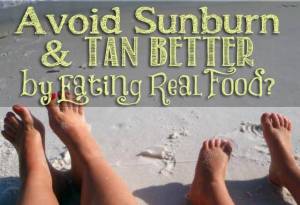
Sunlight is very important for our skin. Americans tend to be deficient in Vitamin D3 because we are inside more than we are outside. Please visit my Vitamin D Council board for more information about this topic. Americans are also afraid of the sun lathering up with all those sun screens. If we are wise and respect the power of the sun, there is no need to buy all those chemically filled sunscreens that short-circuit the benefits of the suns rays that create an atmosphere that brings damage to the skin. Here are other sunscreen options.
…Yellow appears to have important antioxidant functions in the body including vitamin C, beta carotene, and vitamin E that guard the body from damaging effects that can destroy cells and play a role in many diseases
….Yellow was thought to stimulate the nerves and purify the body in light therapy treatment.
Another interesting fact about yellow is how it is hidden under the top layers of green 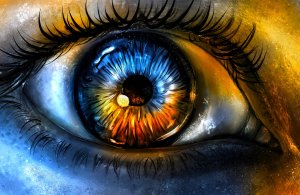 in your leafy greens – they have 15-47% of lutein, but a very low content (0-3%) of zeaxanthin. This is why we get the different colors of tree leaves in the fall. This means that those leafy greens also contain this yellow pigment to bring you all of the great benefits of this beautiful nutrient. The body cannot absorb lutein without the help of fat, so when eating your leafy green salads or smoothies, include a type of fat like Avocado, coconut oil, or a nut of your choice.
in your leafy greens – they have 15-47% of lutein, but a very low content (0-3%) of zeaxanthin. This is why we get the different colors of tree leaves in the fall. This means that those leafy greens also contain this yellow pigment to bring you all of the great benefits of this beautiful nutrient. The body cannot absorb lutein without the help of fat, so when eating your leafy green salads or smoothies, include a type of fat like Avocado, coconut oil, or a nut of your choice.
Zeaxanthin – xanthin, a yellow coloring carotenoid present in the retina of the eye and in many plants.
The two major carotenoids in the human macula and retina are lutein and zeaxanthin. In our periphery vision, Zeaxanthin declines more rapidly than lutein.
On a Spiritual note: There exists an old saying in American culture: “The eyes are a window to the soul.” Matthew 6:22 (KJV) says, “The light of the body is the eye: if therefore thine eye be single, thy whole body shall be full of light.”
Let your eyes feast on this yellow that can trigger the feelings of happiness and friendliness, warmth like the sun.
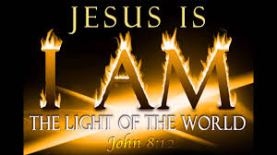 Take care in what you allow your eyes to see. May the light of the Lord’s words help you to be a light bringing sunshine to someone else as Matthew 5:16 (KJV) says, “Let your light so shine before men, that they may see your good works, and glorify your Father which is in heaven.”
Take care in what you allow your eyes to see. May the light of the Lord’s words help you to be a light bringing sunshine to someone else as Matthew 5:16 (KJV) says, “Let your light so shine before men, that they may see your good works, and glorify your Father which is in heaven.”
Yellow Fruits & Vegetables and some quantities of either Lutein or Zeaxanthin or both:
- Yellow bell peppers – low amount of lutein (12%) but no Zeaxanthin. The highest amount of Zeaxanthin (8% Lutein 37% Zeaxanthin = 45% total) was found in Orange Peppers.
- Yellow zucchini (or vegetable marrow – 30-52%) These compounds help scavenge harmful oxygen-derived free radicals
- Yellow tomatoes (39%-sun dried)
- Maize (Sweet corn) – (60% of lutein and 25% of zeaxanthin)
- Bananas – the banana skin contains lutein. Some people prefer to boil the peel for 10 minutes or so before eating it, putting it through a juicer or blending it with other fruits. In Asian countries, banana peels are cooked with their flesh or fried on their own. Banana peels are packed full of serotonin which boosts your mood and helps you feel happy. Some studies have shown that in just three days, eating 2 banana peels can raise your serotonin level by nearly 15%. Plus, the banana peel can help you sleep easier because of the tryptophan found in it. Tryptophan is the sleep-inducing amino acid. Bananas contain pectins and fructooligosaccharides(FOS). Pectins have been studied for their effects on blood sugar levels, and FOS is a prebiotic that provides food for the healthy bacteria in your lower intestine.
6. Lemon (10.344ug) – lutein may help protect against atherosclerosis (buildup of fatty deposits in arteries), the disease that leads to most heart attacks.
7. Squash – (2401.3μg/1 cup) listed in the top ten for lutein and zeaxanthin
8. Grapefruit (10.169ug)
9. Mellon – 27.058ug honeydue; 26.25ug cantalope
10. Apples with skin (28.985ug)
11. Pears – (78.32 mcg)
12. Pineapple contains bromelain, a proteolytic substance that breaks down proteins, and it therefore can aid in digestion. Look for pineapples that are heavy for their size, free of soft spots, bruises, and darkened areas, and they should have a fragrant, sweet smell at the stem.
NOTE: BEST FOODS FOR LUTEIN AND ZEAXANTHIN: (As noted above, green leafy foods surprisingly contain these beneficial nutrients)
Kale, spinach (47 mole% lutein), Swiss chard, collard greens, turnip greens, dandelion greens, mustard greens, beet greens, radicchio, summer squash (all varieties), watercress, green peas, persimmons, winter squash (acorn, butternut, etc.), pumpkin, broccoli (22 mole%), brussels sprouts (27 mole%), lettuce (22 mole% – especially dark lettuces), asparagus, corn, green beans, okra, artichokes, green bell peppers.
Try this yummy recipe: tropical-pineapple-mango-salsa
If you appreciated this information, please pass it on.
Sources:
http://bjo.bmj.com/content/82/8/907.full
https://www.ncbi.nlm.nih.gov/pmc/articles/PMC1722697/
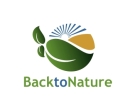

5 thoughts on “Yellow, The Vision Vitamin”